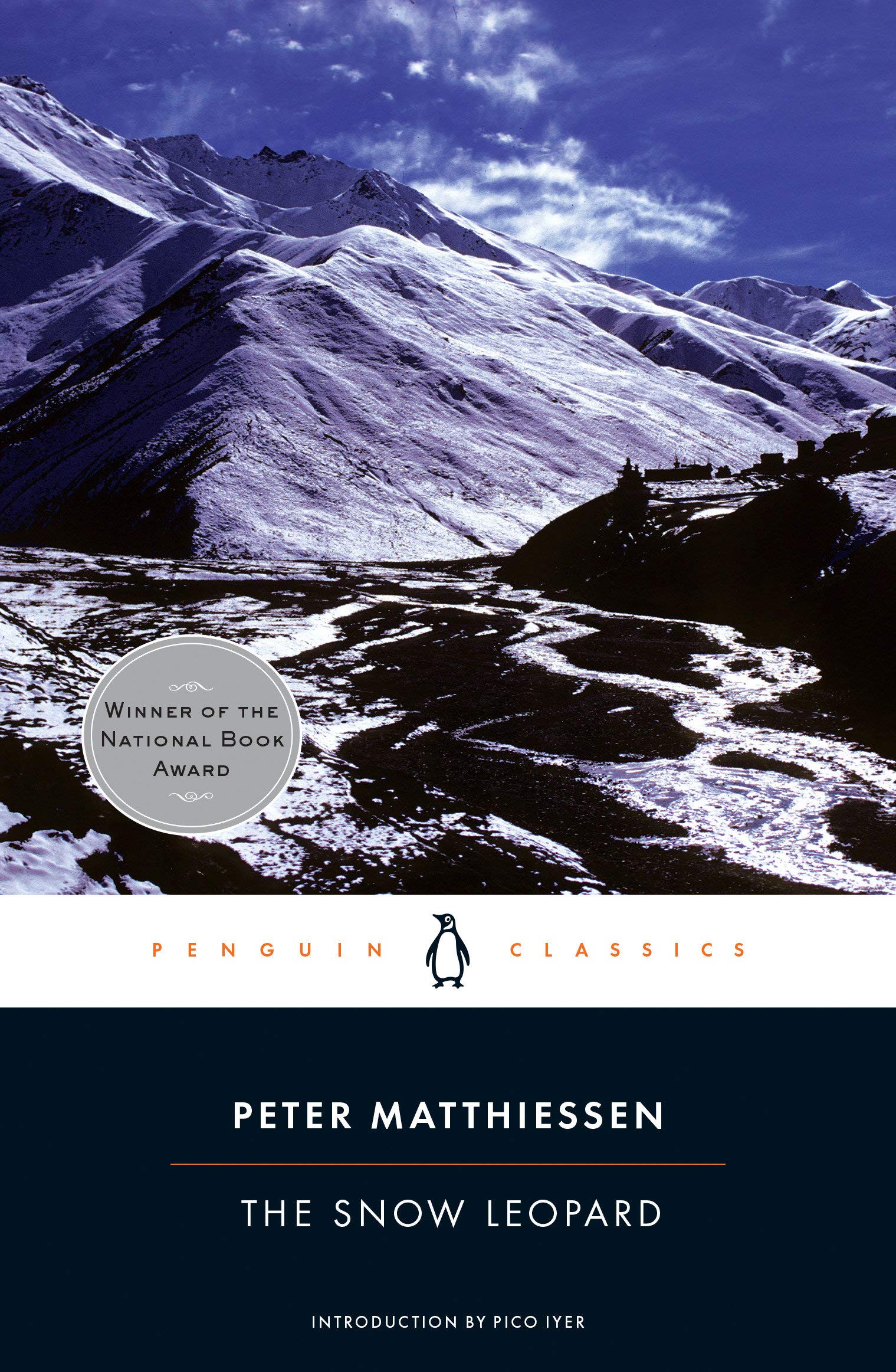Peter Matthiessen, The Snow Leopard (1978)
In a delicious irony, the book that has been “the inspiration for more hippy trails and backpacker expeditions to Kathmandu and beyond than any other volume,” was written by a CIA agent. The Snow Leopard is the tale of a trek into the Dolpo region to look for Himalayan black sheep and, yes, snow leopars (spoiler alert: no snow leopards), and it’s also the story of a man trying to center himself after the death of his wife. His journey is a time of reflection colored by his devotion to Zen Buddhism.
It’s the mysticism that set this book apart — not a hippie mysticism, but a very New York Review sort of mysticism (or maybe I should say Paris Review, since that’s the journal Matthiessen founded alongside George Plimpton, apparently as cover for his CIA work, or New Yorker, since that’s where a shorter version was first published, but then you have to remember it was the William Shawn New Yorker, not the post-Tina Brown New Yorker). The footnotes are a who’s who of erudite occultism for the credulous highbrow: D.T. Suzuki, Chogyam Trungpa, Mircea Eliade, the German monk Angarika Govinda (The Way of the White Clouds), fabulist Carlos Castaneda, the Theosophists Alexandra David-Neel and Helena Blavatsky, the Theosophist hanger-on Walter Evans-Wentz. Most surprising of all was a quote from Lawrence LeShan, an ESP researcher and psychic healer who was also my grandmother’s mentor when she got her Ph.D. in parapsychology.
Small world.
The Snow Leopard is a curious choice for a hippie favorite, with its detailed natural description — including, alas, a very scientifish disquisition on evidence for yeti — and focus on the hardships of the journey, it harks back to an older style of travel writing that has gone out of style. There’s introspection aplenty, but very little that you could call post-colonial, and Matthiessen’s attitude toward the natives he travels with has more than a whiff of paternalism, though one ought to admire his honesty in depicting himself being churlish and shitty towards the porters and sherpas. There’s a jarring moment when he describes his trek as consisting of two people, meaning of course two white people and a large group of Nepalis.
For my work, the most important thing this book did was point me towards LeShan. For the rest of it, it didn’t move me. Some of it is beautifully written, but at times it sounds like a parody of George Plimpton diction, or a twelve-page Updike essay on pigeon feathers in the New York Review. There are some fine descriptions of the mountains and villages in an area not far from where I trekked, but the feel of the book is never quite right, never quite in tune with the Nepal I remember or have read about in so many other books. I suppose it’s the very headiness that’s off. For all its towering peaks and its temples climbing skyward, Nepal is an earthy place, rough and funky. Matthiessen seems to have missed its delightful goofiness.

